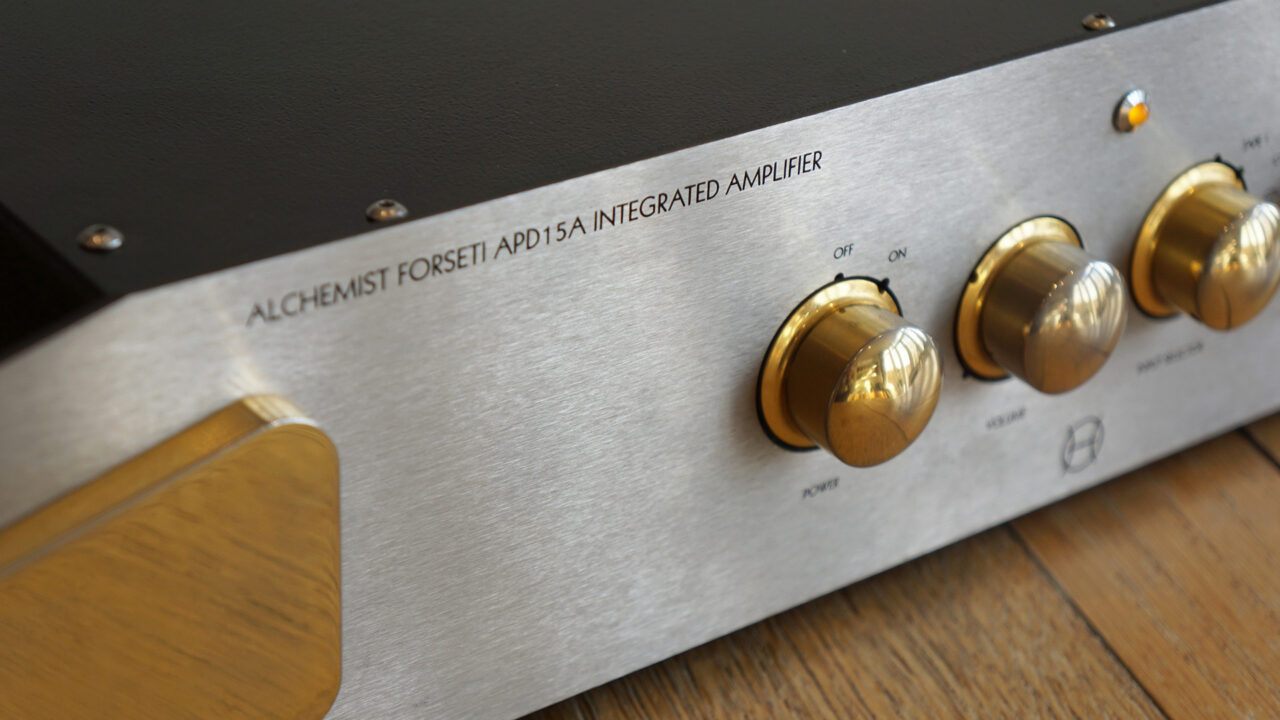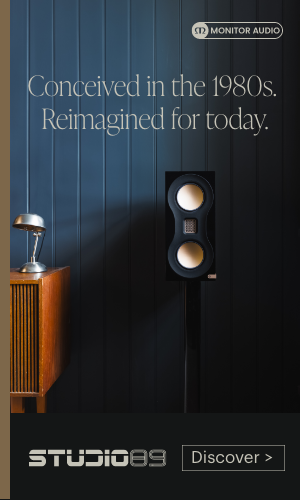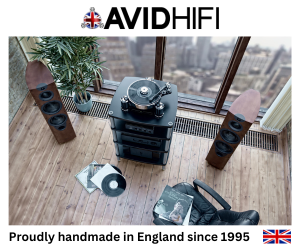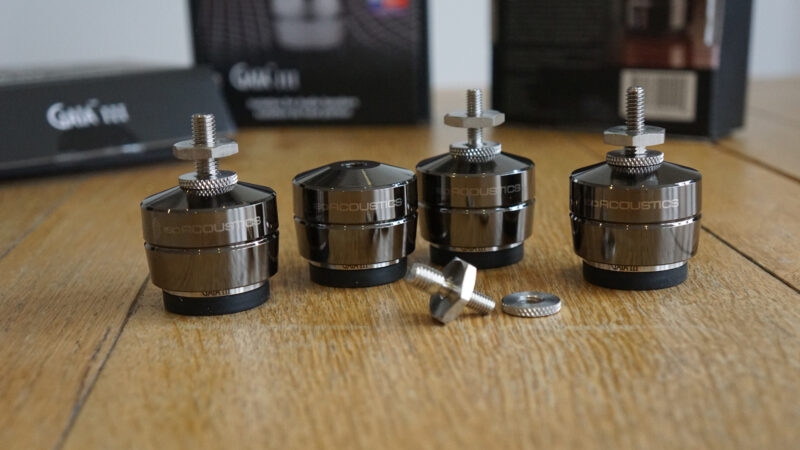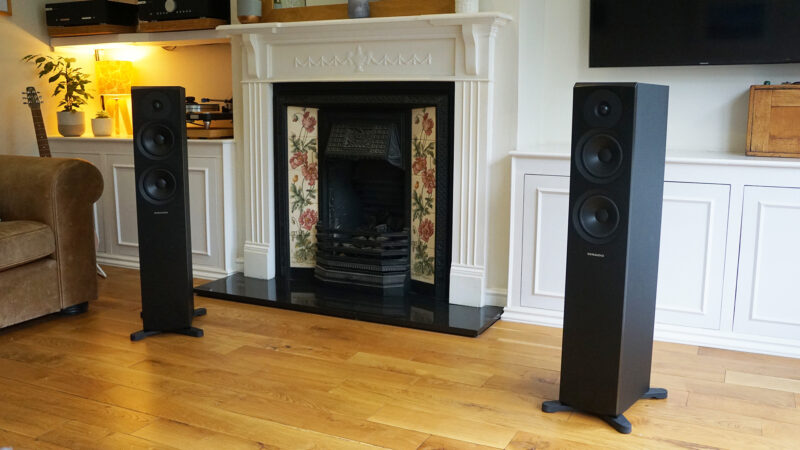
At Audiograde we believe quality hifi and the experiences it gives us isn’t just about the latest kit, it’s about systems and products of all ages that can still provide musical enjoyment by the bucketload.
And in a society skewed towards disposable goods and electronics with short lifespans, hifi is one of the few industries that tends to build kit designed to provide years, if not decades of loyal service.
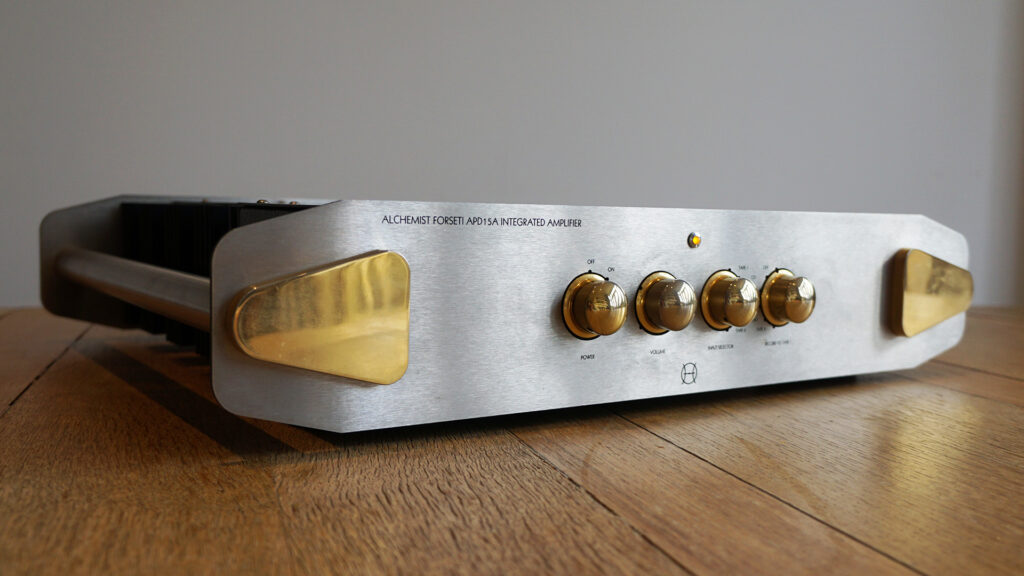
My early Alchemist Forseti MKI, denoted by its orange LED power light that were revised to electric blue for later models
My years of hifi ownership have rewarded me with a select few special products which, like my well weathered ’60s Omega watch, have become heirlooms as much as functional goods. My Pink Triangle Export GTI turntable is one such product (painstakingly restored a few years back and a focus of a future Classic HiFi feature). The other is my Alchemist Forseti MKI integrated amplifier you see here, bought used almost twenty years ago, which looks just as striking today.
The test of time
Retailing for £900 back in 1990, the Forseti APD 15A was the brand’s top flight integrated at the time. Despite its moderate price for the era, it was clearly leaning into super-integrated territory thanks to its build and attention to detail. A Class AB design, offering a claimed 100W into both channels (8ohms) its internals are true dual mono, with separate toroidal transformers feeding each stereo channel and individual circuit boards for its power, output and preamp stages.
Read more about Alchemist Products in our Spotlight Feature.
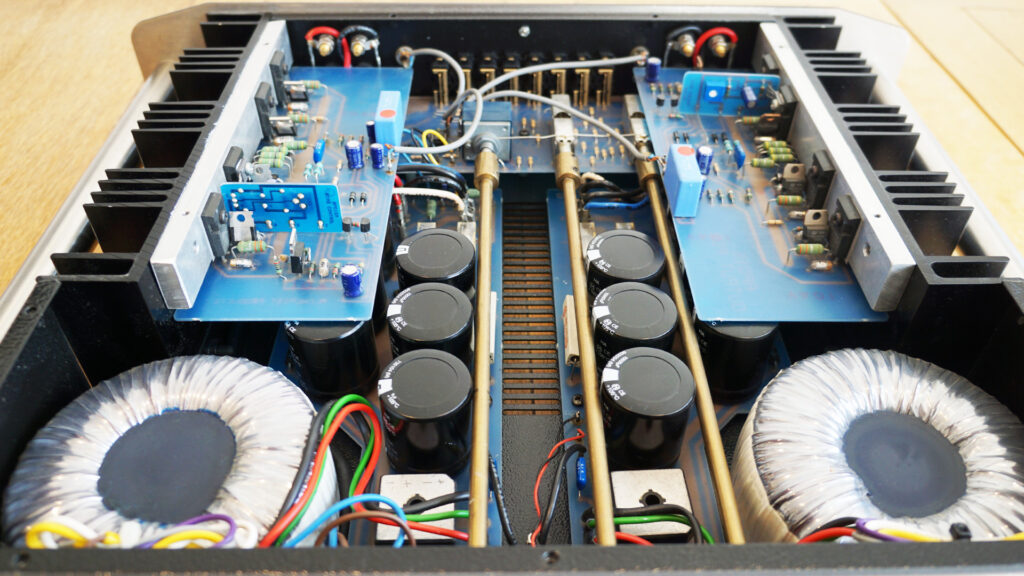
Inside the Forseti, separate power supplies and output boards for each channel denote its dual mono design. Brass drive shafts for volume and input help to keep signal paths short
Being the MKI variant of the Forseti, the APD 15A also got a generous bank of six of large smoothing capacitors per channel, with the MKII reducing this to four each side, installed on a shared PCB. Whether this was product or production refinement I can’t say, but having heard the MKII and later RC version, to these ears the MKI is the smoothest and sweetest sounding of the three, with a greater sense of air and space around instruments.

A thorough inspection from the Russ Andrews team requires a full strip down
Count on Russ
However despite its original build quality there’s no denying this amp’s age, and plumbing it into my current system for a few weeks reveals some of its former magic to be lacking, leaving it sounding a little flat and lifeless compared to its former glory.
Time to bring in the experts and after a quick call to the team at Russ Andrews, it was off for a once over. What’s unique about the Russ Andrews upgrade service is how it can be tailored to your needs and wallet. You can see a range of upgrades made to a variety of amps on the company’s website.

Lifting the output boards reveals cabling and soldering work that’s ripe for replacement
After examining the amp and testing its caps (which I upgraded a few years back to higher tolerance Nichicons) and other internals we moved on to the wiring, which having lifted the lid myself before dispatch was showing its age and the original solder work left something to be desired. With all of its separate circuit boards, the Forseti hosts over 4m of internal wiring. And when we consider the role it plays in carrying the amp’s delicate internal signals, this cabling performs a crucial task as the veins supplying the amp’s musical blood.
Cable kings
Russ Andrews Accessories offers a range of internal cable upgrades, including no-compromise silver based options. But wanting to enhance the amp’s original sound rather than change it, I opted for copper variants to stay closer to the original wiring and keep the costs down.

Reels of Kimber TCS and TCSS to the rescue, ready to be installed
These consisted of Kimber copper TCX for the mains input and TCSS 3 braid PBJ / Kimber TCSSS for the signal wiring. For the cable runs to the power amp section and speaker outputs, we specified Kimber TCX copper too. All in with labour included this came to just over three hundred quid, which is the price of a single interconnect in some systems and will ensure this amp is set for years to come. For final good measure while we had the lid off, we also swapped out the internal fuses for RA’s Superfuses.
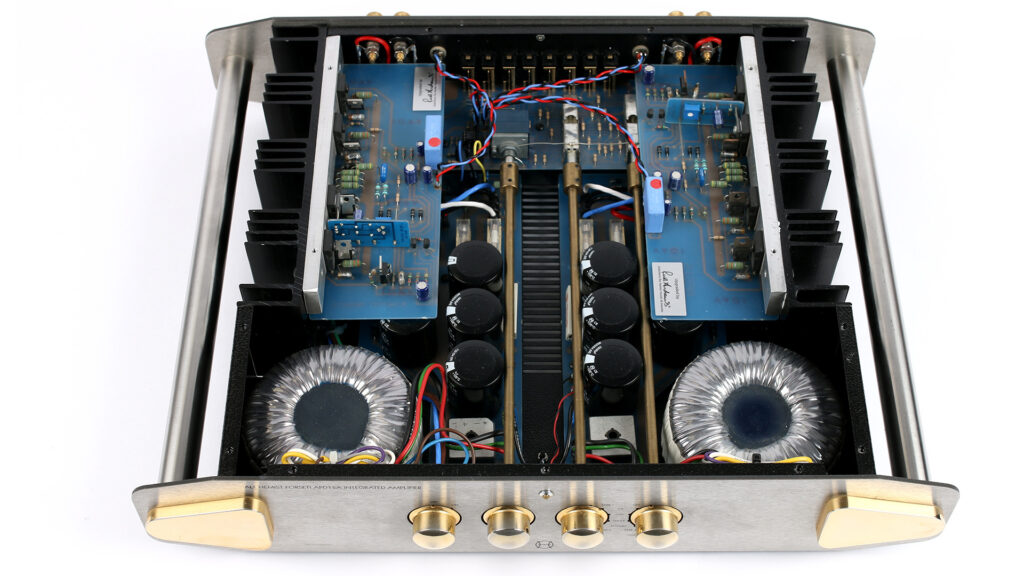
Over 4m of internal cabling was replaced during the amp’s rebuild
Back together and the amp looks stunning, the new soldering work is true craftsmanship that takes the amp beyond its original spec and will give me peace of mind for years to come.
Performance
So how does it sound? Having spent almost two decades with this amp and weeks of intense testing before its overhaul, the improvements are immediately clear.
This amp has always presented vocals with a hairs on the back of your neck realism that reveals how good it was and still is today. Spinning the title track from John Martyn’s Solid Air on vinyl from a VPI Scout 21 and driving Dynaudio Emit 3o speakers brings new levels of texture to the amp’s previous performance, that puts a big smile on my face. Previously Martyn’s voice had sounded a bit subdued in the mix pre rewire, whereas now he comes across with more presence and energy.
This amp has always favoured drawing out the emotion in the music to the extent that you forgive its shortcomings in other areas, such as ultimate low end grip and control across the soundstage. But serving up a 16-bit/44kHz file of Mayonnaise’s Winter Song from my NAS drive via a Primare NP30 streamer, delivers greater levels of balance and order than I’m used to hearing from the Forseti as everything in the mix seems more evenly presented than before.
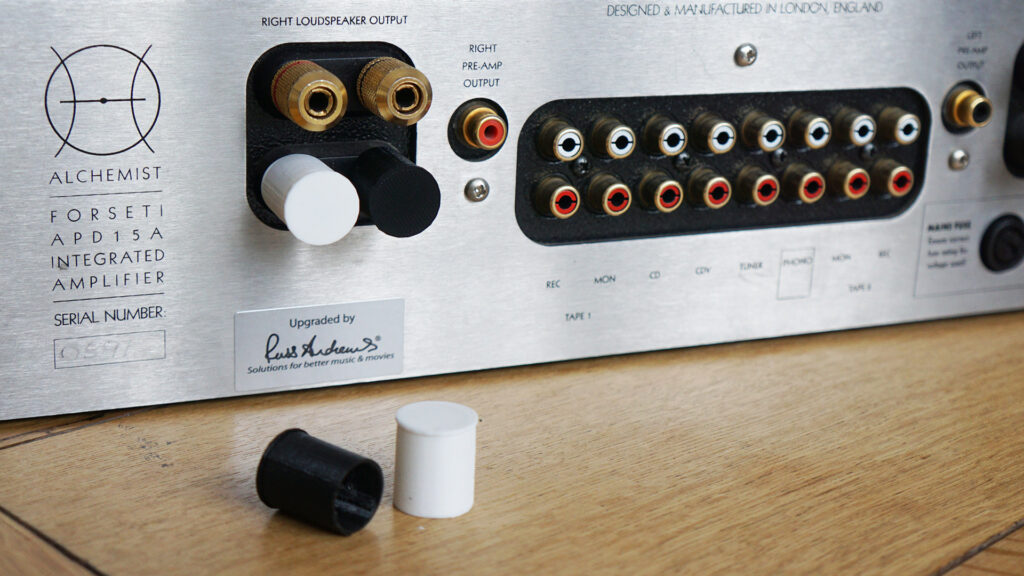
Going the extra mile – with closely positioned exposed speaker jacks, the Russ Andrews team 3D printed a set of handy caps to help protect them from stray cables
This amp’s tonality generally sounds more forward leaning than others of the era, but without sounding too hot or harsh and with the upgraded internal cables, none of this is lost in the presentation. What I can detect though post upgrades is a slightly smoother delivery at the top end. With a 16/44 rip of Terry Callier’s You’re Goin’ Miss Your Candyman serving up the sounds, the Alchemist’s higher notes sound lusher than ever, and the rising brass section in the right channel has added degrees of density. The difference it subtle, but it’s enough to increase this amp’s appeal as an all rounder that can more than hold its own with today’s hardware.
In summary
Thanks to the sensible and tailored upgrade paths provided by Russ Andrews Accessories, this amp has been given a new lease of life, allowing it to make a welcome return as the heart of my second system that celebrates the best of classic hifi. Better still, it feels good to be preserving hifi of this quality for generations to come through good value improvements, while sounding better than it did when it left the factory.
Read about the full service on Russ Andrews Accessories website.


